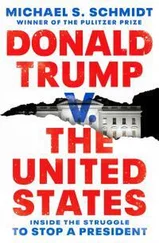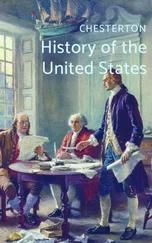Jeffrey Lewis - The 2020 Commission Report on the North Korean Nuclear Attacks Against the United States
Здесь есть возможность читать онлайн «Jeffrey Lewis - The 2020 Commission Report on the North Korean Nuclear Attacks Against the United States» весь текст электронной книги совершенно бесплатно (целиком полную версию без сокращений). В некоторых случаях можно слушать аудио, скачать через торрент в формате fb2 и присутствует краткое содержание. Город: New York, Год выпуска: 2018, ISBN: 2018, Издательство: Mariner Books, Жанр: Фантастика и фэнтези, Триллер, на английском языке. Описание произведения, (предисловие) а так же отзывы посетителей доступны на портале библиотеки ЛибКат.
- Название:The 2020 Commission Report on the North Korean Nuclear Attacks Against the United States
- Автор:
- Издательство:Mariner Books
- Жанр:
- Год:2018
- Город:New York
- ISBN:9-781-328-57391-9
- Рейтинг книги:4 / 5. Голосов: 1
-
Избранное:Добавить в избранное
- Отзывы:
-
Ваша оценка:
- 80
- 1
- 2
- 3
- 4
- 5
The 2020 Commission Report on the North Korean Nuclear Attacks Against the United States: краткое содержание, описание и аннотация
Предлагаем к чтению аннотацию, описание, краткое содержание или предисловие (зависит от того, что написал сам автор книги «The 2020 Commission Report on the North Korean Nuclear Attacks Against the United States»). Если вы не нашли необходимую информацию о книге — напишите в комментариях, мы постараемся отыскать её.
The 2020 Commission Report on the North Korean Nuclear Attacks Against the United States — читать онлайн бесплатно полную книгу (весь текст) целиком
Ниже представлен текст книги, разбитый по страницам. Система сохранения места последней прочитанной страницы, позволяет с удобством читать онлайн бесплатно книгу «The 2020 Commission Report on the North Korean Nuclear Attacks Against the United States», без необходимости каждый раз заново искать на чём Вы остановились. Поставьте закладку, и сможете в любой момент перейти на страницу, на которой закончили чтение.
Интервал:
Закладка:
Most of the survivors who managed to reach hospitals or other places where they hoped to find medical assistance were disappointed to encounter tens of thousands of other sick and dying people and only a handful of doctors and nurses, many of them seriously wounded themselves.
[Name withheld], Arlington, VA:There were too many people. We took care of the people around us by using the clothes of dead people as bandages, especially for those who were terribly wounded. By that time, we somehow became insensible [to] all those awful things.
[Name withheld], Honolulu, HI:I felt someone touch my leg. It was a pregnant woman. She said that she was about to die. She said, “I know that I am going to die. But I can feel that my baby is moving inside. I don’t mind if I die. But if the baby is delivered now, it does not have to die with me. Please help my baby live.” There were no obstetricians. There was no delivery room. There was no time to take care of her baby. All I could do was to tell her that I would come back later when everything was ready for her and her baby. This cheered her up. She looked so happy. So I went back to work taking care of the injured, one by one. There were so many patients. But the image of that pregnant woman never left my mind. Later, I went to the place where I had found her before. She was still there, lying in the same place. I patted her on the shoulder, but she said nothing. The person lying next to her said that a short while ago, she had fallen silent.
Despite being overwhelmed, many doctors and nurses worked tirelessly to aid people, even as their own condition deteriorated from fatigue or radiation poisoning. For many survivors, the heroism of ordinary people like these is a recurring memory of those horrible days.
Moreover, despite claims to the contrary by some people—including former president Trump—we have found no evidence of widespread looting or violence. Specifically, a systematic investigation into the activities of the National Guard and Army units deployed to maintain order reveals no evidence at all that there was organized criminal activity, much less widespread executions to combat it. Despite this, Trump has repeatedly referred to such events, saying, “It was on television. I saw it. It was well covered at the time. Now, I know they don’t like to talk about it, but it was well covered at the time.”
The commission believes that these rumors stemmed from conspiracies spread on the internet claiming to show military vehicles transporting the bodies of executed looters. These images, many of which are hosted on sites maintained by the Russian Federation, in fact show the vehicles that were required to recover and bury the more than one million people killed in the attack whose bodies were not pulverized or vaporized. Hundreds of thousands of people died in the initial explosions, and tens of thousands more died by the hour. The Army and the National Guard had to organize the enormous logistical effort associated with removing these bodies as quickly as possible. For many, the presence of large numbers of such vehicles, filled with bodies—the “death cabs”—is a stark memory of the days following the attack.
[Name withheld], Honolulu, HI:As military trucks came into the city, they started loading bodies into truck beds. I saw three soldiers try to lift a burned body, but they dropped it to the ground, losing their grip when the skin sloughed off.
[Name withheld], Arlington, VA:When I came to, it was about seven in the evening…. I found myself lying on the floor. A soldier was looking in my face. He gave me a light slap on the cheek, and he said, “You are a lucky boy.” He told me that he had gone with one of the few trucks left to collect the dead bodies…. They were loading bodies, treating them like sacks. They picked me up from the riverbank and then threw me on top of the pile. My body slid off, and when they grabbed me by the arm to put me back onto the truck, they felt that my pulse was still beating, so they reloaded me onto the truck, carrying the survivors. I was really lucky.
It was this heroic effort to retrieve and bury the dead, we believe, that gave rise to the rumors and internet conspiracies.
For many survivors, the overwhelming horror of that day, and the days that followed, is not a story of looting and violence, but a tragic tale of complete strangers desperately trying to help one another in hopeless circumstances. Gillian Mackenzie, a book editor in Manhattan, was close enough to the blast that she was buried in ash and debris. Workers at a McDonald’s in Lower Manhattan pulled her out of the ash and gave her water, saving her life. Far from former president Trump’s claims of mass looting and violence, she said, it was a day when “ordinary people saved each other.”
Air Force One landed at Offut Air Force Base in Omaha, Nebraska. As soon as the president stepped off the plane, he was taken to the gleaming headquarters of Strategic Command—the military entity responsible for waging and winning nuclear wars. But instead of entering through the front door, Trump was taken beneath the concrete plaza near the building’s entrance to the Operations Center. Officially called US Strategic Command Underground Command Center, it was better known as the “Mole Hole.”
Down inside the Mole Hole, President Trump was escorted to an empty office. Despite the spartan accommodations, STRATCOM was in perfect communication with the other underground facilities maintained by the Department of Defense, as well as with the bunkers beneath the White House and Mar-a-Lago.
For many Americans, even in the months leading up to March 2020, the prospect of nuclear war had seemed remote. For the Pentagon, however, nuclear war was an ever-present possibility, and it had drawn up “continuity of government” plans that would ensure the survival of the government even in the event that American society itself completely collapsed. Over the past decade, Congress had authorized billions of dollars in funding to build secure underground facilities where US leaders could be safe from a nuclear attack. The construction of a new command center at Offut alone had cost $1.2 billion, and it was only one of six underground complexes that were now involved in coordinating the response.
These complexes included Site R, the alternate Pentagon where the secretary of defense was now organizing the attack on North Korea; Mount Weather in the Blue Ridge Mountains, where most government functions had relocated once the first nuclear weapon struck northern Virginia; NORAD’s alternate communications site at Cheyenne Mountain in Colorado; and the underground bunkers beneath the White House and Mar-a-Lago. In addition to these sites, which were now central to the federal government’s disaster management effort, members of Congress were huddled in yet another bunker underneath Fort Leslie McNair in Washington, DC. The Trump administration did not, however, attempt to establish contact with members of Congress in their bunker. “One of the awkward questions we faced [in planning for this sort of scenario] was whether to reconstitute Congress after a nuclear attack,” recalled one official present with the president in Omaha. “It was decided that no, it would be easier to operate without them.” Congress would remain in session, but the Trump administration did not make contact with them for six days.
The “continuity of government” efforts on March 21 went largely according to plan. Once he was in Omaha, the president was in regular communication with the secretary of defense at Site R and Jack Francis at Mar-a-Lago. (Aides recalled that Francis told everyone that he had volunteered to remain behind at Mar-a-Lago to assist those suffering in Jupiter.) Thanks to these communication links, the president was now receiving a steady stream of reports on both the attacks under way against the United States and the progress of the air war against North Korea.
Читать дальшеИнтервал:
Закладка:
Похожие книги на «The 2020 Commission Report on the North Korean Nuclear Attacks Against the United States»
Представляем Вашему вниманию похожие книги на «The 2020 Commission Report on the North Korean Nuclear Attacks Against the United States» списком для выбора. Мы отобрали схожую по названию и смыслу литературу в надежде предоставить читателям больше вариантов отыскать новые, интересные, ещё непрочитанные произведения.
Обсуждение, отзывы о книге «The 2020 Commission Report on the North Korean Nuclear Attacks Against the United States» и просто собственные мнения читателей. Оставьте ваши комментарии, напишите, что Вы думаете о произведении, его смысле или главных героях. Укажите что конкретно понравилось, а что нет, и почему Вы так считаете.












